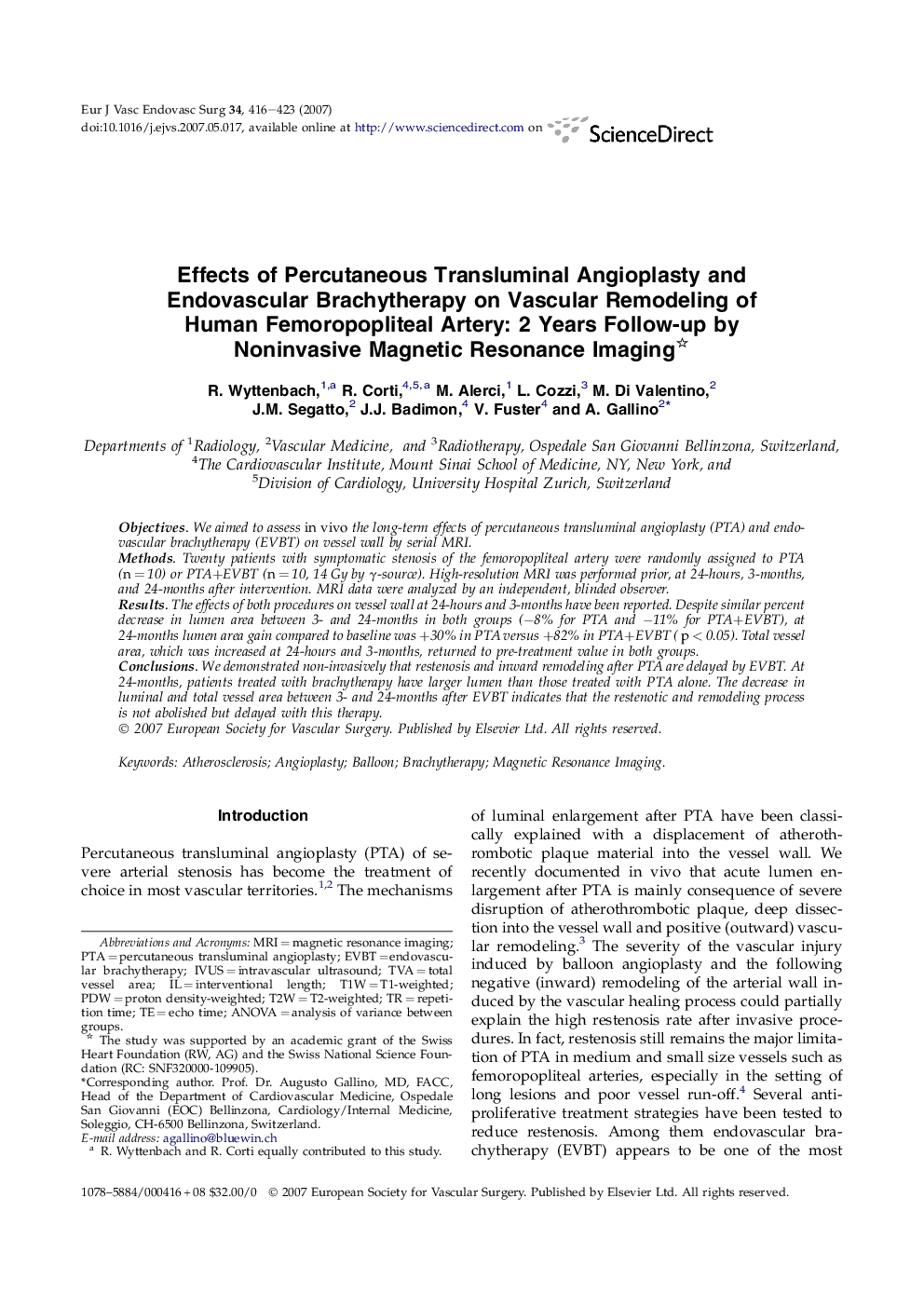| Article ID | Journal | Published Year | Pages | File Type |
|---|---|---|---|---|
| 2914367 | European Journal of Vascular and Endovascular Surgery | 2007 | 8 Pages |
ObjectivesWe aimed to assess in vivo the long-term effects of percutaneous transluminal angioplasty (PTA) and endovascular brachytherapy (EVBT) on vessel wall by serial MRI.MethodsTwenty patients with symptomatic stenosis of the femoropopliteal artery were randomly assigned to PTA (n = 10) or PTA+EVBT (n = 10, 14 Gy by γ-source). High-resolution MRI was performed prior, at 24-hours, 3-months, and 24-months after intervention. MRI data were analyzed by an independent, blinded observer.ResultsThe effects of both procedures on vessel wall at 24-hours and 3-months have been reported. Despite similar percent decrease in lumen area between 3- and 24-months in both groups (−8% for PTA and −11% for PTA+EVBT), at 24-months lumen area gain compared to baseline was +30% in PTA versus +82% in PTA+EVBT (p < 0.05). Total vessel area, which was increased at 24-hours and 3-months, returned to pre-treatment value in both groups.ConclusionsWe demonstrated non-invasively that restenosis and inward remodeling after PTA are delayed by EVBT. At 24-months, patients treated with brachytherapy have larger lumen than those treated with PTA alone. The decrease in luminal and total vessel area between 3- and 24-months after EVBT indicates that the restenotic and remodeling process is not abolished but delayed with this therapy.
